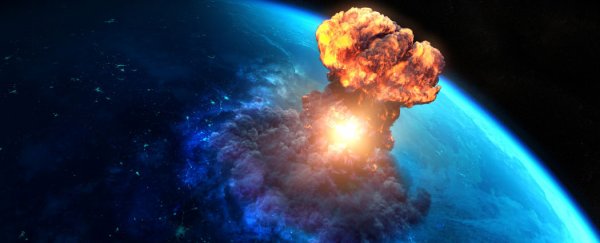It sounds like the setup for a Hollywood movie: a team of scientists and astronauts band together to save the Earth from imminent destruction from outer space. But there's nothing staged about the Asteroid Day movement, which is a very real scientific effort to help raise awareness about the actual threats posed to our planet by asteroids, as well as ramping up global efforts to help prevent the unthinkable from happening.
Asteroid Day, which takes place today (June 30), represents a consortium of more than 100 global scientists, astronauts, physicists and artists concerned that not enough is being done to detect and track the thousands (and potentially millions) of inner Solar System Near-Earth Objects (NEOs) that could theoretically wipe out the planet in a worst case scenario if early action to divert or destroy them is not taken.
Some heavy hitters are involved, with founding members including the Association of Space Explorers, the California Academy of Sciences and The Planetary Society, and celebrity help from rock star astrophysicist (Dr) Brian May from Queen, musician Peter Gabriel, and Bill Nye, the Science Guy.
So why June 30? Today is the anniversary of the 1908 asteroid impact at Tunguska in Siberia, which wiped out some 2000 square kilometres (800 square miles) of forest - the size of your average major metropolitan city.
The Asteroid Day's 100X Declaration, which anybody can sign on Change.org, is a global petition to rapidly increase by 100 times the speed and power of current asteroid detection measures, which the movement claims are hopelessly weak in light of the present risks.
"The more we learn about asteroid impacts, the clearer it becomes that the human race has been living on borrowed time," Brian May said in a statement. "Asteroid Day and the 100X Declaration are ways for the public to contribute to bring about an awareness that we can get hit anytime. A city could be wiped out anytime because we just don't know enough about what's out there."
According to Apollo 9 astronaut Rusty Schweickart: "Time is an issue. At the current rate of discovery of 20-metre NEOs and larger at about 1,000/year, it will take more than 1,000 years to find 1 million NEOs that potentially threaten Earth. That's a long time and even then we'd have reached only 10 percent or so of the Chelyabinsk-size objects that potentially threaten impact. By signing the 100X Declaration, the public will join us in calling for increasing our asteroid discovery rate to 100,000 (or 100X) per year within the next 10 years. We've simply got to get at it!"
